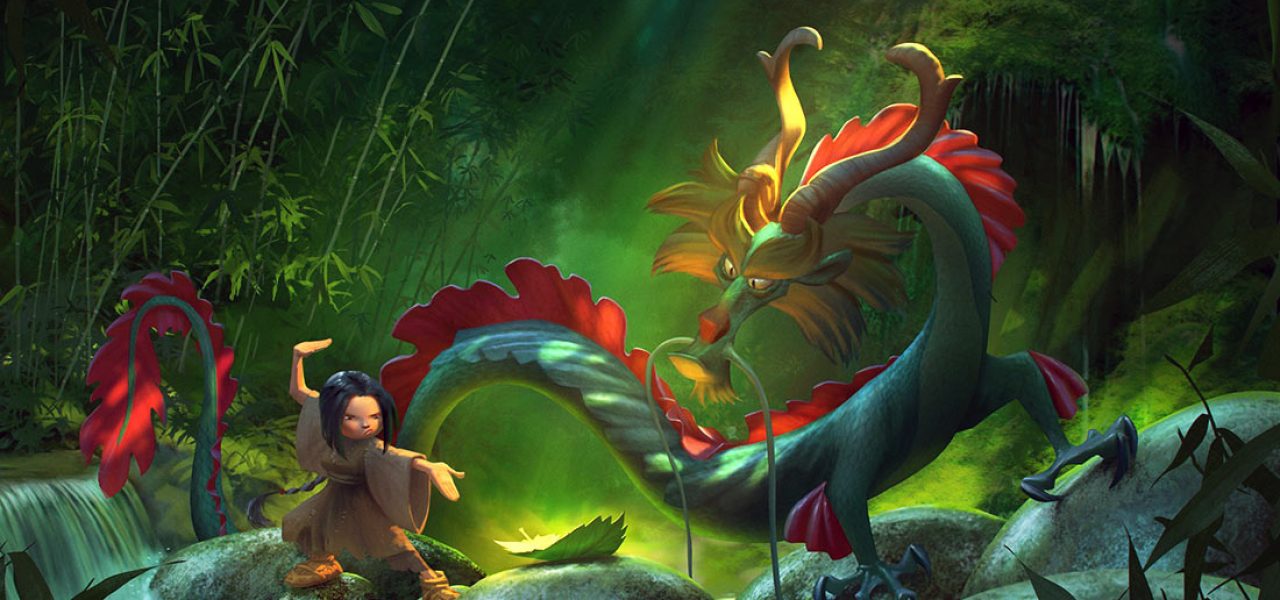

3D Wire Offers Up-Close Look At Spain’s Surging Animation Industry
The 9th edition of 3D Wire will take place next week in Segovia, Spain.
The event is hardly a secret. 3D Wire attracts a who’s who of the Spanish animation industry, from both the business and creative sides. When I attended last year, it felt that the entire Spanish animation community was represented there in one way or another.

Bringing people together in the Spanish industry was an early goal of the event, 3D Wire founder José Luis Farias told me. A decade ago, the industry was scattered and didn’t have a central meeting point. “Some great professionals didn’t know each other even though they were in the same town in Spain,” says Farias.
3D Wire has not only brought everyone together, but fast-tracked the professionalization of the country’s industry. The event is a key place to exchange information about the state of the industry in Spain, create partnerships between companies, and to discover the most interesting new projects being developed in the country of 46 million people. The event is a clearinghouse for all things animated: features, tv series, short films, videogames, transmedia, and online projects.
Farias and his team work year-round gathering data on the Spanish animation industry and promoting Spanish animation abroad. The work they’ve done has had a galvanizing effect on Spain’s animation industry, proving to the international animation community that the country is ready for business, while convincing Spanish talent that has left to work abroad that they may want to take another look at returning home.
Despite the growth though, Farias says that the biggest challenge for Spanish producers remains financing. “Even though Spain has a lot of animation production in comparison with other European countries, we have few grants from the government and few tax shelters that really help us develop and make co-productions.”
He further explains: “When you start to make a project and share [resources] between countries, [funders] always ask you two or three things: Do you have your national broadcasters involved in the project? Do you have tax shelters or any grants from the government? And what is your talent? For the last question, it’s no problem for Spain because there are a lot of talented and experienced people here. But we have problems with the financing and tax shelters.”

The situation is changing though: Farias points out that there are two Spanish regions – the Canary Islands and Navarra – that now offer tax shelters for the animation industry, making them an attractive option for producers.
Farias is optimistic that the Spanish animation scene will continue to grow and improve, and his long-term mission is convincing the Spanish government and national broadcasters to give animation the support it needs to remain competitive with other European countries that offer greater funding to their local industries.
“There are new players in the media, and there are young talented producers who want to risk more with projects,” Farias says. “There’s new blood in the neighborhood that’s more open-minded to other possibilities apart from usual tv channels – from online to transmedia projects, and trying to develop IPs with videogames and transmedia all together with animation.”

All signs point to a big surge in Spanish animation production over the next few years. Upcoming feature releases in the U.S. like Paramount’s Amusement Park and the independent Animal Crackers are being animated in Spain, and in Spain itself, audiences are supporting locally-made content. For example, Tadeo Jones 2: El secreto del Rey Midas, is currently the third highest-grossing film released in Spain this year, handily beating out American animated fare like The Boss Baby, Cars 3, and The Lego Batman Movie.
The 3D Wire schedule next week promises to offer a first-hand look at the latest animation development in Spain and neighboring Portugal. The event has confirmed that 159 different Spanish and Portuguese projects will be presented, among them 24 short films, 13 feature films, 16 animated series, 48 video games, 9 apps, 11 vr experiences, 12 transmedia projects, and 26 webseries.
Among the most high-profile presentations will be news about about Dragonkeeper (pictured at the top of this piece), the most ambitious China-Spain co-production to date. Based on the book series by Carole Wilkinson, the cg film is set to be directed by Ignacio Ferreras, who directed the Spanish feature Wrinkles, with animation to be handled by Illion Animation Studios and China Film Animation.
Other speakers will include Isabel Herguera, discussing her work on the feature project Sultana’s Dream, based on a 1905 Bengali feminist utopian story; Birdboy: The Forgotten Children director Alberto Vázquez previewing his next feature Unicorn Wars; and a look at the Portuguese film Dom Fradique directed by Zepe and produced by AIM Animation Studios.
Stop motion director Sam (Possessed) will present his new short project Rutina and Daniel Martínez Lara (Goya winner for Alike) will preview his distinctively 2D-styled Blender project Hero.
In the video game section, The Game Kitchen’s Blasphemous and Studio Koba’s Narita Boy, both of which have benefitted from successful crowdfunding campaigns, will share their latest progress.
On the tv side, highlighted projects include The Infinite Hero from creators Christian Villacañas and Francesc Xavier Manuel, following the adventure of Oura, a soul without a body able to reincarnate into dead warriors, and Nuno Beato’s short-form Portuguese series The Tribe, offering humorous commentary on the clash of civilizations.
For more details on 3D Wire including a full schedule of events and accreditation info, visit the 3D Wire website.

